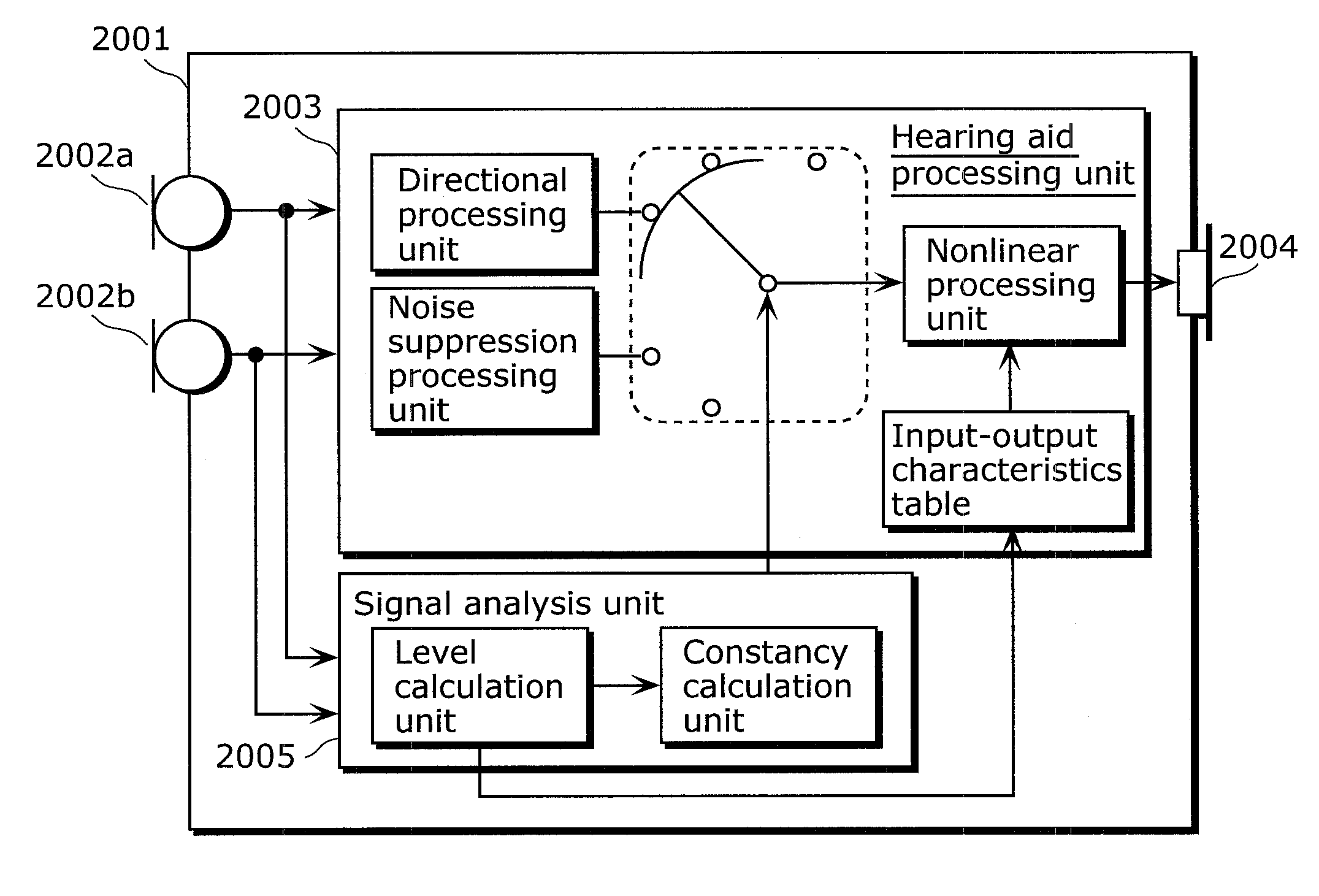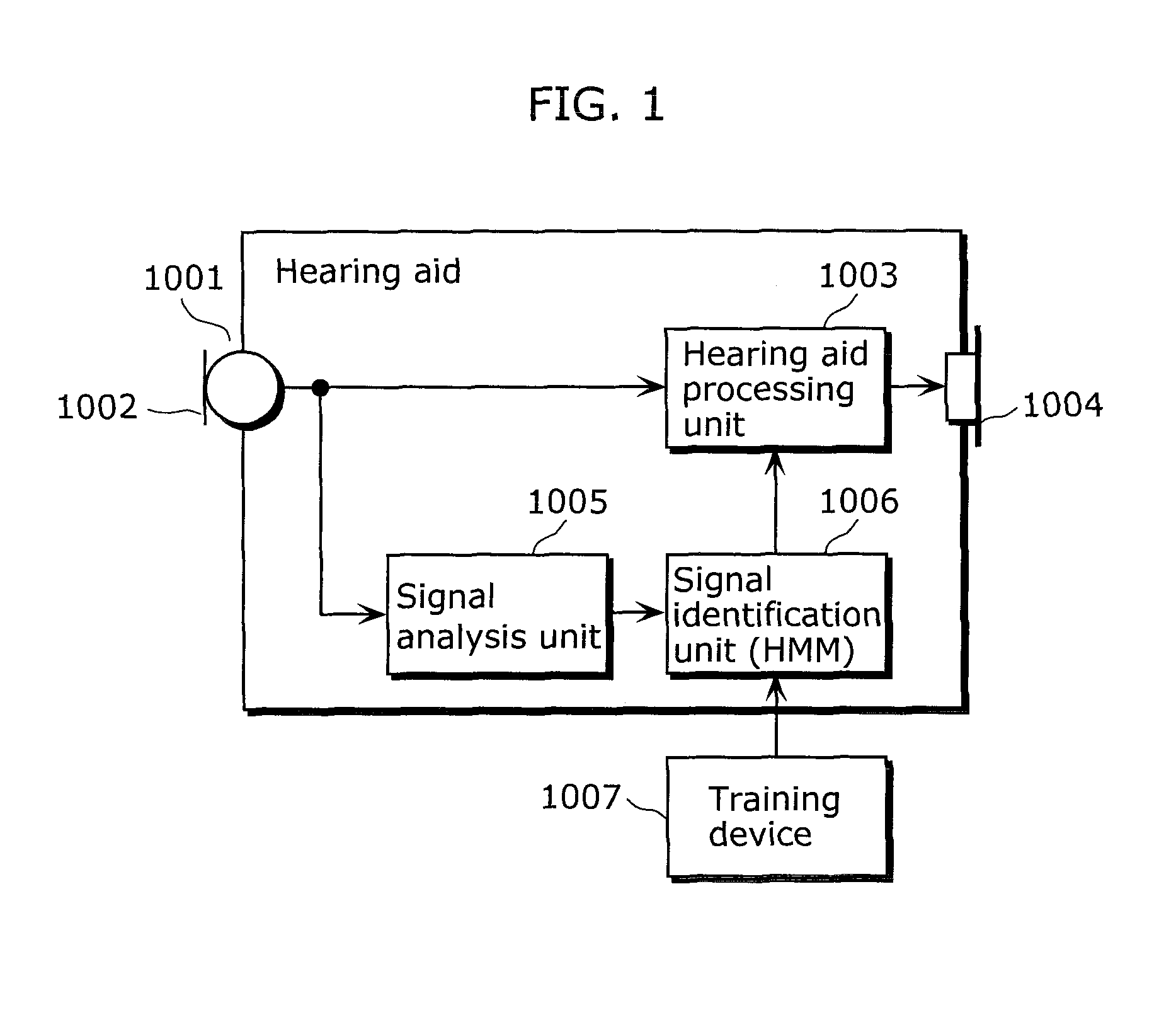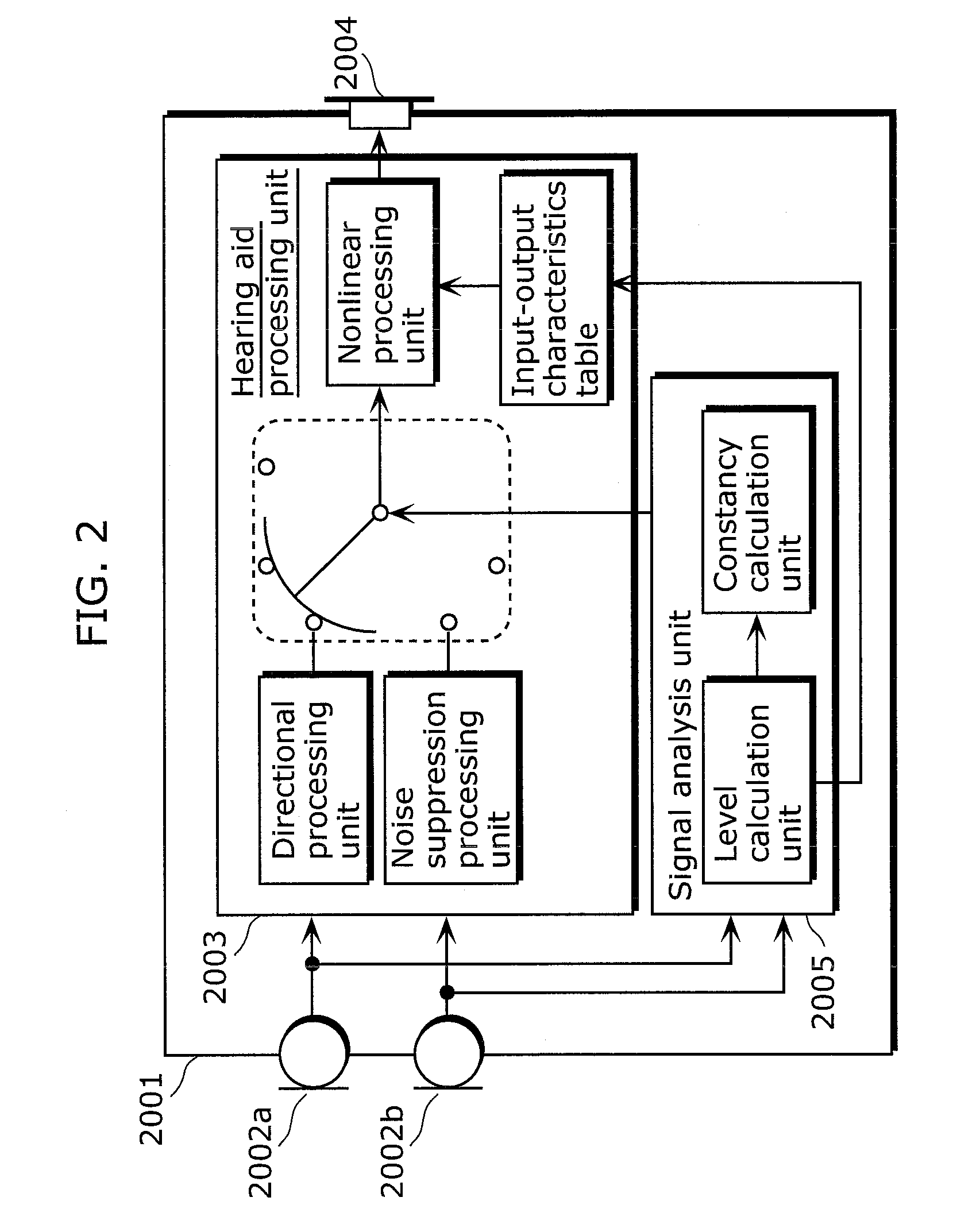Hearing aid, hearing aid system, walking detection method, and hearing aid method
a hearing aid and detection method technology, applied in the field of hearing aids, can solve problems such as interference with recognition, and achieve the effect of easy detection of walking states
- Summary
- Abstract
- Description
- Claims
- Application Information
AI Technical Summary
Benefits of technology
Problems solved by technology
Method used
Image
Examples
embodiment 1
[0052]The following describes a structure and an operation of a hearing aid 1 in Embodiment 1, with reference to FIGS. 3 and 5.
[0053]The hearing aid 1 in this embodiment includes a microphone 2, a hearing aid processing unit 3, a receiver 4, a wind noise detection unit 5, and a walking detection unit 6. The walking detection unit 6 includes a pulse detection unit 61 and a repetition detection unit 62.
[0054]The microphone 2 acquires an external acoustic signal into the hearing aid 1.
[0055]The hearing aid processing unit 3 performs hearing aid processing such as amplification or attenuation on the acoustic signal acquired by the microphone 2, according to a hearing level and the like of the user, and outputs the acoustic signal on which the hearing aid processing has been performed to the receiver 4.
[0056]The receiver 4 outputs the acoustic signal on which the hearing aid processing has been performed to outside again, so as to be heard by the user.
[0057]The wind noise detection unit ...
embodiment 2
[0075]The following describes a structure and an operation of the hearing aid 1 in Embodiment 2, with reference to FIGS. 6 and 9.
[0076]The hearing aid 1 in this embodiment includes the microphone 2 that includes microphones 2a and 2b. In the following, description of the same components as those in the hearing aid 1 in Embodiment 1 is omitted, and the wind noise detection unit 5 and the pulse detection unit 61 in the walking detection unit 6 in this embodiment are described in detail.
[0077]The wind noise detection unit 5 in this embodiment includes an adaptive filter that uses one of acoustic signals acquired by the microphones 2a and 2b as a main signal, and the other one of the acoustic signals as a reference signal. In detail, the wind noise detection unit 5 includes a coefficient variable filter 53, a subtractor 54, and a coefficient update unit 55.
[0078]The pulse detection unit 61 in the walking detection unit 6 includes a level detection unit 612, a comparator 613, and a pulse...
embodiment 3
[0094]The following describes a structure and an operation of the hearing aid 1 according to Embodiment 3 of the present invention, with reference to FIGS. 7 and 9. In the following, description of the same components as those in the hearing aid 1 in Embodiments 1 and 2 is omitted, and the wind noise detection unit 5 and the pulse detection unit 61 in the walking detection unit 6 in this embodiment are described in detail.
[0095]The wind noise detection unit 5 in this embodiment includes the adaptive filter that includes the coefficient variable filter 53, the subtractor 54, and the coefficient update unit 55 as in Embodiment 2. However, the wind noise detection unit 5 in this embodiment differs from that in Embodiment 2, in that the filter coefficient of the coefficient variable filter 53 is outputted.
[0096]The pulse detection unit 61 in the walking detection unit 6 includes a variation component extraction unit 615, the level detection unit 612, a comparator 617, a gain limiter 618...
PUM
 Login to View More
Login to View More Abstract
Description
Claims
Application Information
 Login to View More
Login to View More - R&D
- Intellectual Property
- Life Sciences
- Materials
- Tech Scout
- Unparalleled Data Quality
- Higher Quality Content
- 60% Fewer Hallucinations
Browse by: Latest US Patents, China's latest patents, Technical Efficacy Thesaurus, Application Domain, Technology Topic, Popular Technical Reports.
© 2025 PatSnap. All rights reserved.Legal|Privacy policy|Modern Slavery Act Transparency Statement|Sitemap|About US| Contact US: help@patsnap.com



